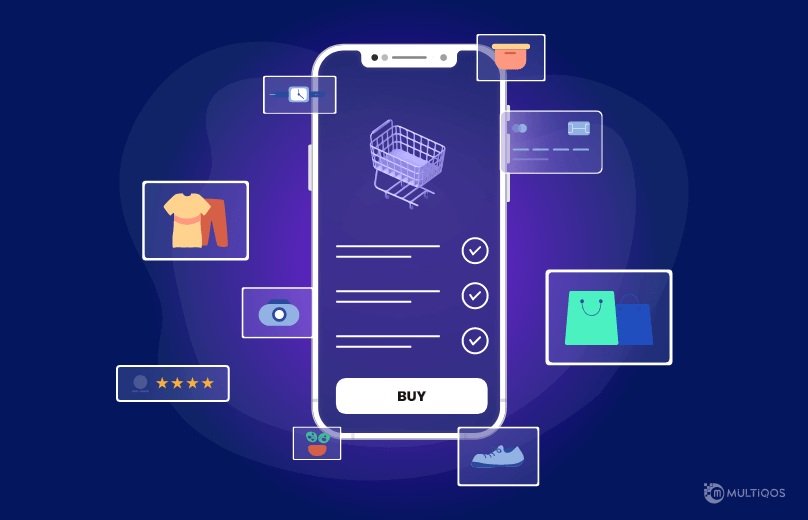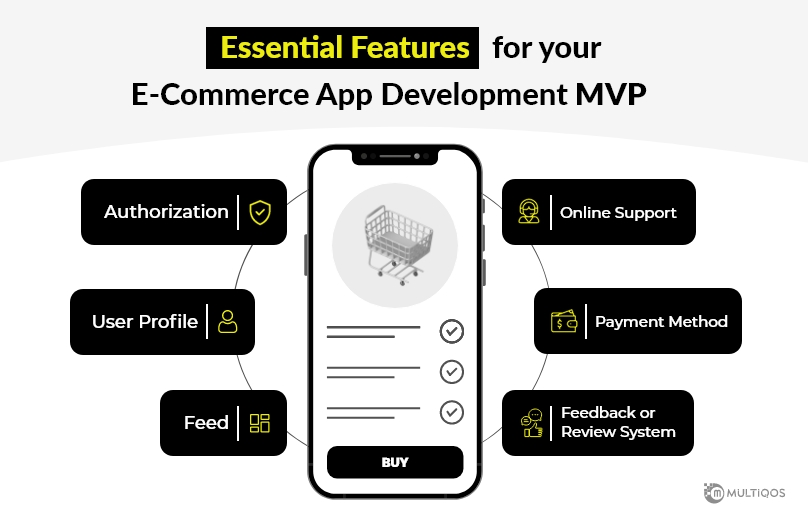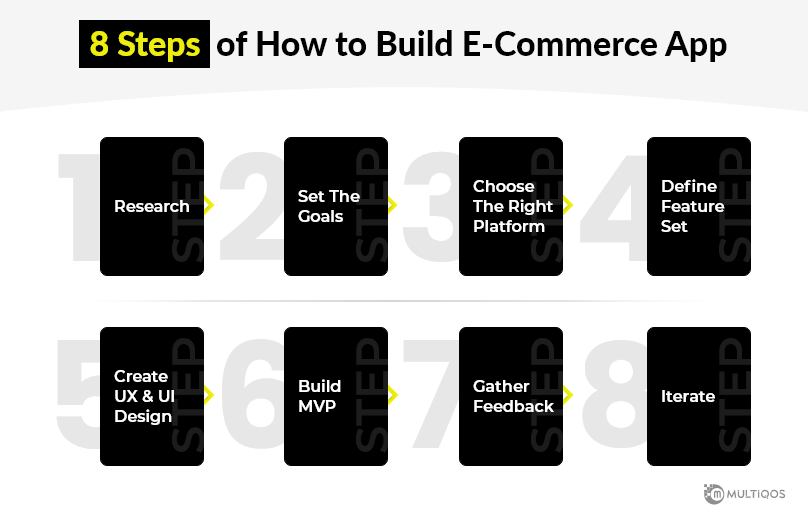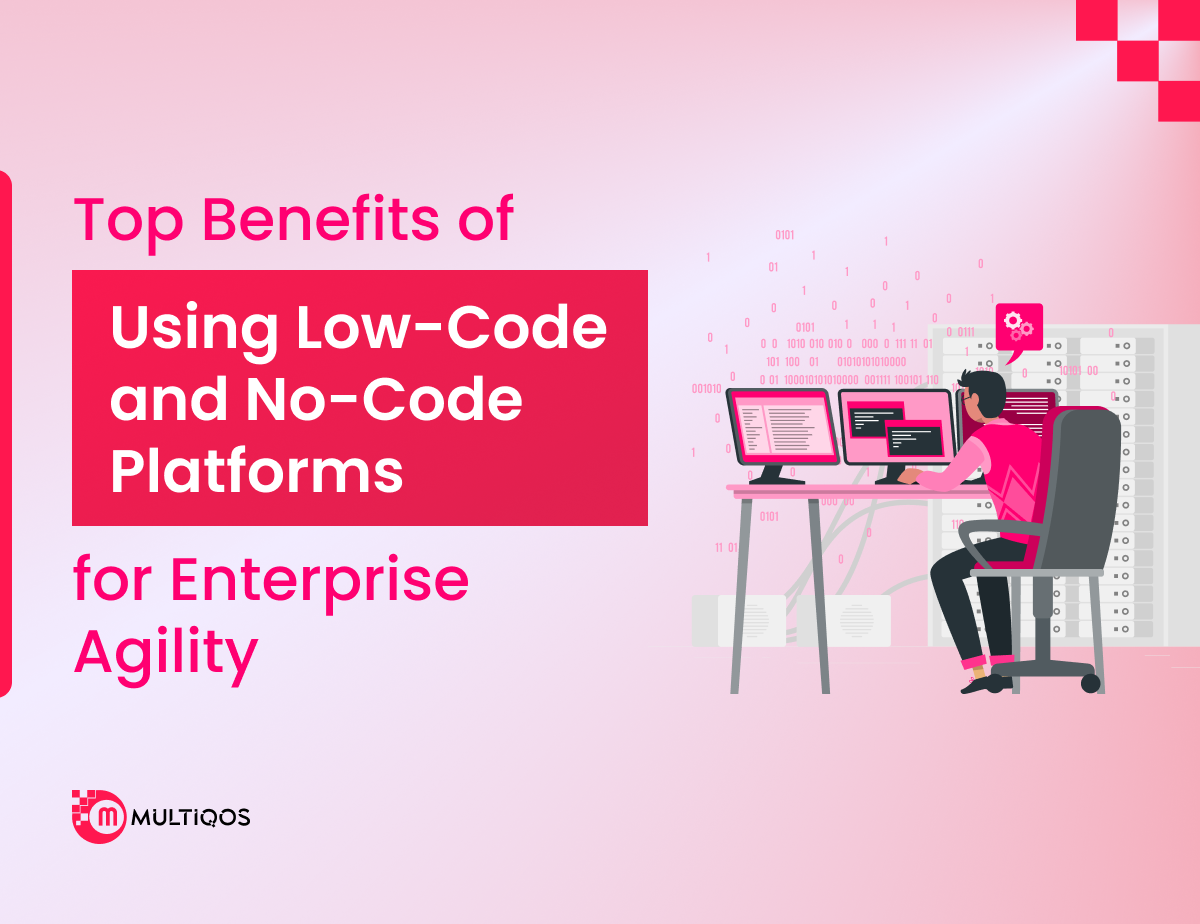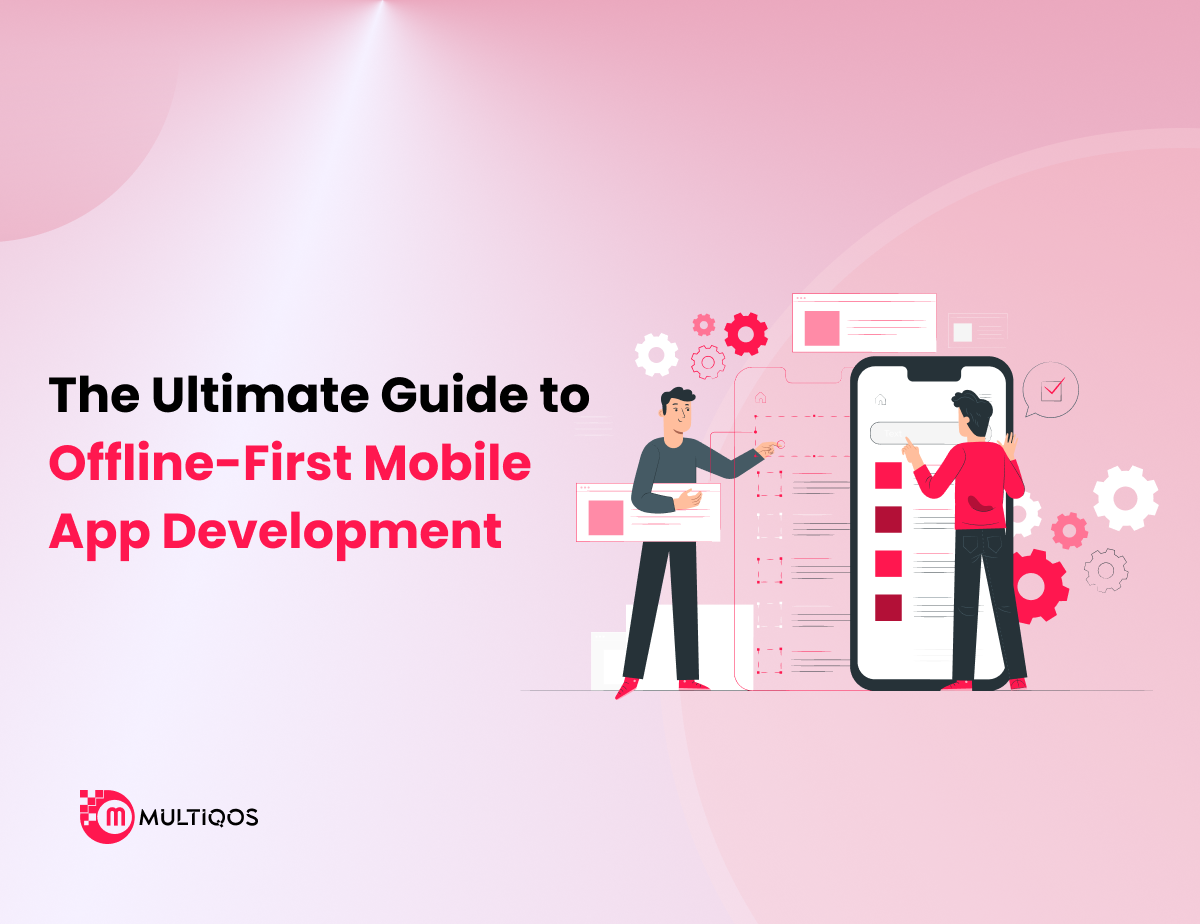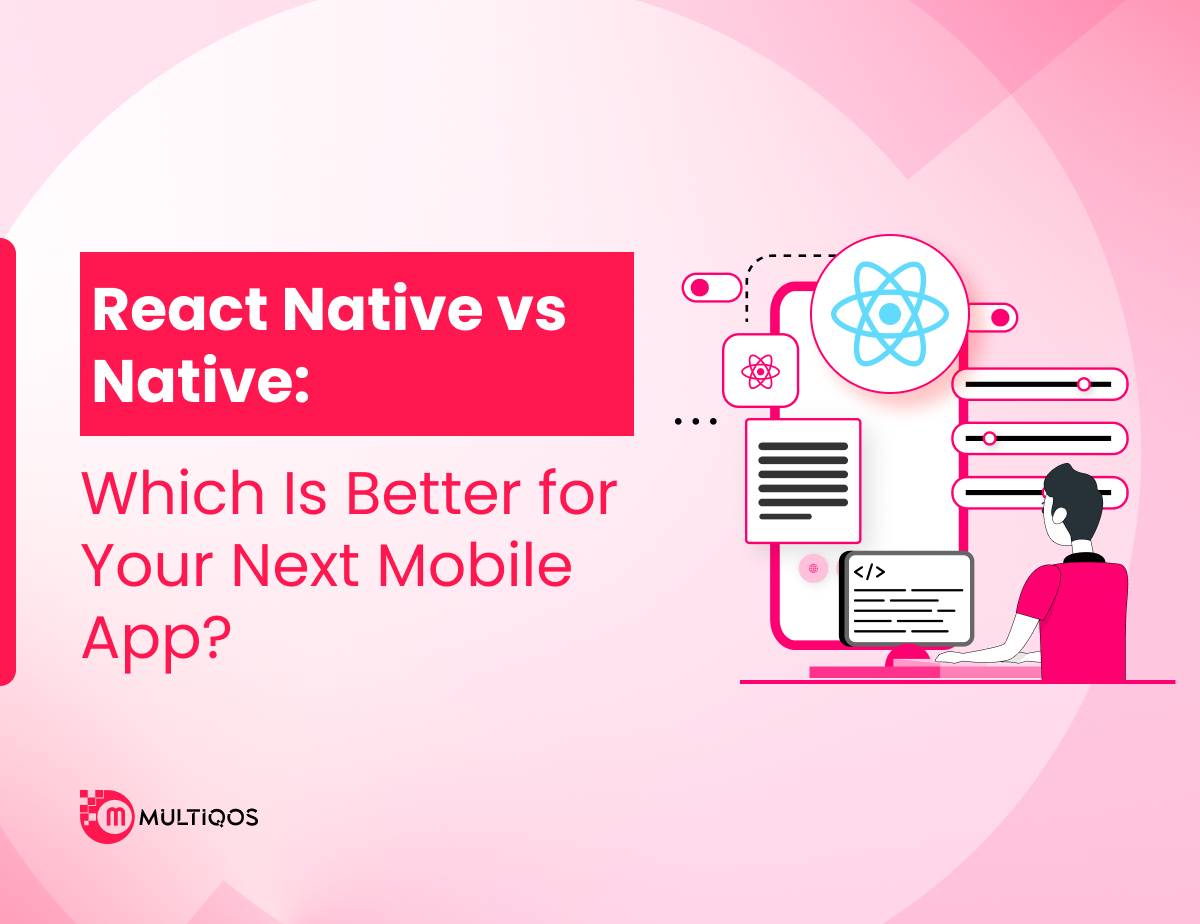E-Commerce App Development Guide: How-To Build, Key Features and Cost
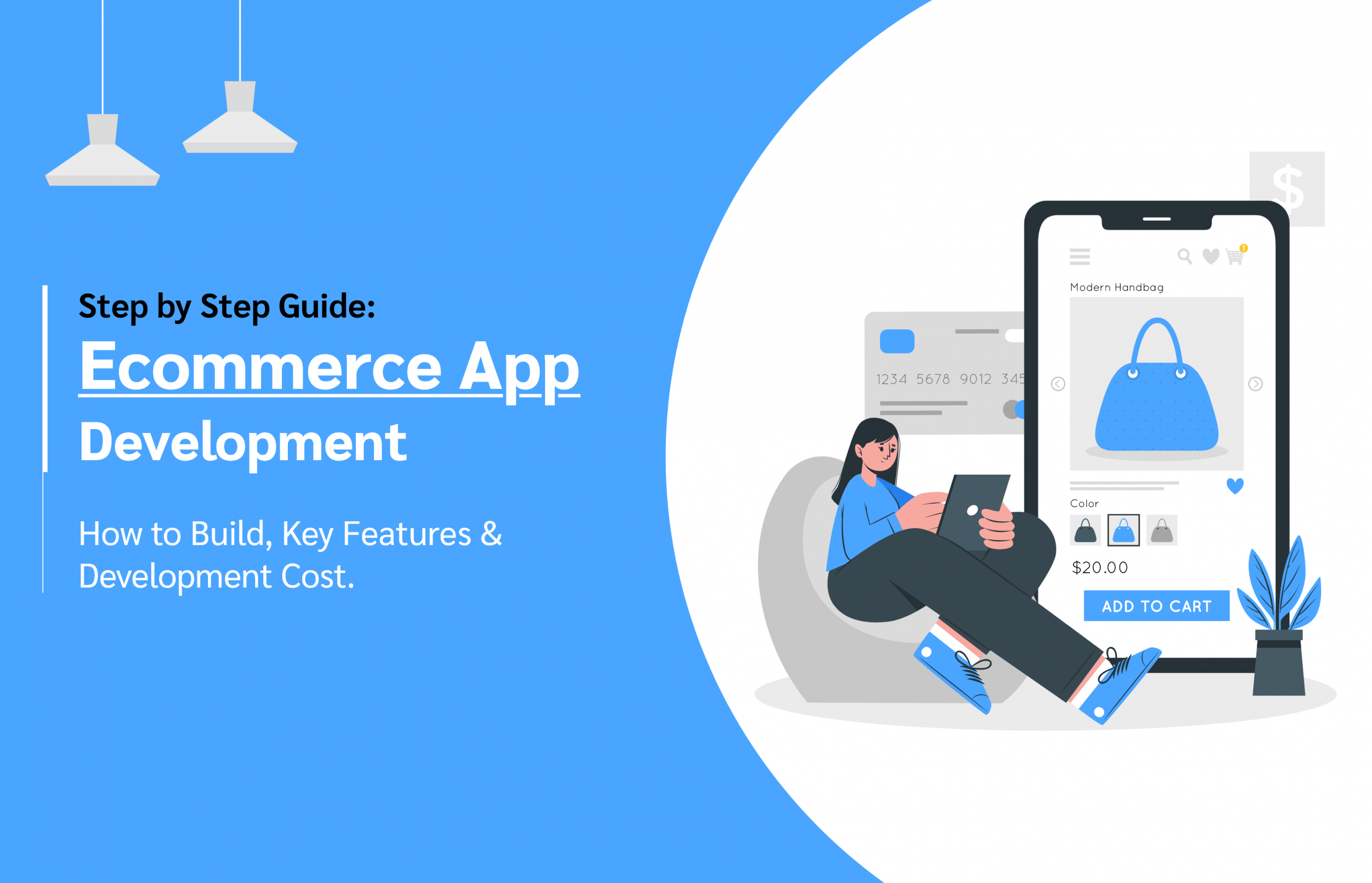
Table of Contents
- What is Mobile e-Commerce App?
- eCommerce Apps Examples That Rock
- Reasons to Build eCommerce App (Why do you need to make a shopping app?)
- Most Popular Apps For Shopping
- Essential Features For Your e-Commerce App Development MVP
- How To Create A Mobile e-Commerce App? (Steps)
- How Much Does It Cost to Create An eCommerce App?
- How Long Does It Take To Develop An ECommerce App?
- How Do We Create An e-Commerce Shopping App?
- What Will You Get Through Cooperation With Us?
- Final Word
- FAQ
When we think about e-commerce, we associate them with Flipkart, Myntra, Amazon, eBay. It can be easily said that over the years, e-commerce has substantially revolutionized with these prominent sites. Commerce evolved into e-commerce, and the customer was altered as a result of the enhanced convenience provided by these e-commerce websites. The widespread popularity of e-commerce across industries and domains encouraged the launch of business and sales. Over the years eCommerce, mobile app development has grown into wide popularity.
What is Mobile e-Commerce App?
English entrepreneur Michael Aldrich launched e-commerce in its first version roughly 40 decades ago. While his concept was initially met with skepticism, it has become an inextricable aspect of our existence. Now, when we say eCommerce, we’re referring to online marketplace sales. To purchase specific commodities and goods, you merely need to use your smartphone or tablet to conduct online transfers.
Nowadays, the most prevalent touchpoint that effortlessly integrates practically everyone, including consumers and businesses, is mobile internet service providers’ 24-7 connection. The most popular option is for mobile-friendly e-commerce systems and websites to be developed. When it comes to mobile commerce, or m-commerce, things are moving at a quick pace.
eCommerce expansion has been fuelled by technological advancements, globalization, people’s need for more alternatives, and better customer experience. The modern-day eCommerce sector necessitates the conversion of physical establishments to an online presence. That’s where the development of eCommerce mobile apps enters.
eCommerce Apps Examples That Rock
Certain e-commerce that has been rocking the e-commerce application industry are:
- Goat App: The application has one of the best search and filter features that makes navigation easier. Filters are normally a weak point in mobile e-commerce app; however, they aren’t in this case. This application has a great filter feature, and it is straightforward, simple to use and intuitive.
- IHerb app: The IHerb app does an excellent job showcasing the goods card in the Product Detail Page and the catalogue layout. This is a significant problem in the pharmaceutical industry because all content is distinct for each segment: supplements, sports products, infant care, and so on — and yet you must stay consistent and maintain the same UX guidelines, which IHerb achieved admirably.
Reasons to Build eCommerce App (Why do you need to make a shopping app?)
As you can see, eCommerce apps play an important role. And, if we’re talking about why you should make one, a few arguments can be put up as to why you should build e-commerce apps.
- World of Smartphones: There are currently over 4 billion active phones on the planet, which is a fantastic chance to seize. Because they have these gadgets with them at all times, most individuals use them to make online transactions with just one tap since the entire transaction process is easier and efficient. As a result, having a mobile commerce app is only half of the equation.
- Revenue Growth: It is not simply about the smartphones that are the primary essential factors. Many global eCommerce apps, such as Walmart and Amazon, have demonstrated that mobile applications engage new users and increase revenues throughout all devices.
- User Behaviour Changes After Covid-19: COVID-19 fueled the eCommerce industry and impacted how people shop for products. In May 2020, total eCommerce expenditure was $82.5 billion, up 77 percent from the previous year. Using regular year-over-year gains, this would have taken nearly 4- 6 years to reach that figure.
Furthermore, there are other reasons to develop an eCommerce app besides having a decent adaptable web-view, such as:
- The ability to get in touch with a user quickly;
- The ability to notify people via push notifications;
- Improved possibilities for tracking user behaviour;
- Effectively collect analytics;
Most Popular Apps For Shopping
Some of the popular shopping applications for shopping are:
- Shopstyle
- Shopbop
- The Real Real
- Zara
- Etsy
- GILT
- Amazon
- Poshmark
- Spring
- ASOS
Essential Features For Your e-Commerce App Development MVP
- Authorization: Allow consumers to choose between registering using an email address, a phone number, or a social media outlet which consists of the feature of authorization.
- User profile: The user’s personally identifiable information will be included in this function which shall consist of email, name, shipping address, buying history, orders, wish-list). Nicknames, icon pictures, and photographs are also beneficial. As this is an e-commerce app development project, preferred payment methods may be a great choice.
- Feed: In your feed, add a list of recommended features based on the preference of your target audience, which can be updated in real-time to keep their attention; Search Users can type as to what they’re looking for and then filter the findings by brand, colour, size, season, model, and other factors. Because voice search is so popular in e-commerce now, it can be included.
- Online support: Users may be perplexed by sizing charts, delivery procedures or have difficulty placing a purchase. To enable the application, you’ll need to install an instant message or a call centre. Chatbots can also be used to minimize customer service from becoming overburdened with basic and frequent requests, such as logging in. User assistance should be transferred to a competent BPO operator whenever a large-scale e-commerce project is being established.
- Payment Method: Back-end development is usually responsible for integrating one or more payment services. Whenever the payment area is built, the end consumers are barely conscious of the amount of work that remains to be improved. Customers, on the other hand, always enjoy the smooth operation of payment choices. As a result, creating a payment system is critical throughout the creation of an e-commerce platform.
- Feedback: Consumers depend on one another’s opinions while deciding whether or not to buy a thing online because they can’t try it on or see the colour in person. Incorporating a rating system for products and a comments thread for delivering feedback on given goods/services will help to boost your brand’s reputation. In contrast, the section for user credentials can help novices get up to speed quickly. Review sites written by previous consumers can be helpful to first-time buyers. Regular customers, on the other hand, can use feedbacks and opinions to express themselves more.
How To Create A Mobile e-Commerce App? (Steps)
Step 1. Research
Before starting your venture for shopping mobile app development, you need to start with research which should include user interviews and competitor’s research, which are quintessential for analyzing the target audience’s behaviour and trends. It also aids in the selection of the appropriate app platform and set of features for your target group.
Step 2. Set the Goals
It’s so much easier to evaluate if you want to start an iOS app, an Android app, or even both now that you have this research data. It suffices to say that your intended audience’s device usage is a major consideration. It’s so much easier to evaluate if you want to start an Android app, an iOS app, or even both now that you have this research data. It suffices to say that your intended audience’s device usage is a major consideration.
Defining the objectives for your organization is the basis of an eCommerce mobile app development. Here are three things to ask yourself to help you determine your goals. Firstly, the problem that requires addressing, secondly, the target audience to whom you shall sell the product, and lastly, how can you understand the factor of success.
Step 3. Choose the Right Platform
While determining what technologies to utilize for eCommerce application development, learn everything there is to know about your company. Keep records of development costs, inventories, and CMS, database, and scalability framework options.
Step 4. Define Feature Set
You now have a deeper understanding of what issues your product requires to answer and which characteristics can please this end-user because you already have user input, analyst reports, patterns, and the desire to outdo your competition. You can utilize popular prioritizing frameworks and tactics to assist you in selecting which product feature should be at the top of the list.
Step 5. Create UX&UI design
In eCommerce applications, the user experience has to go above in-person purchasing, and UX&UI design is a time to stand out. For your potential customers, the design will represent your voice and brand identification. Colour palettes, enticing images, and seamless page transitions are what create a permanent impact on your customer.
Step 6. Build MVP
The MVP stage is when you should concentrate on your eCommerce software’s most important and constrained elements. Rather than launching a full-fledged product right immediately, focus on a constant review of the product. MVPs are designed to determine what consumers think of a particular product, minimize development time, minimize risk, and better manage resources.
Step 7. Gather Feedback
Whenever the MVP is deployed, it’s time to begin collecting consumer feedback. It’s a method of observing how customers engage with your application, collecting feedback, and identifying areas for development. Feedback is important since it allows you to find out what performs what doesn’t for your intended target group.
Step 8. Iterate
The final but not the least phase is iteration. When we look at the major e-Commerce app developers, we can see that the layout is not ever static. Rather, it’s always changing and responding to industry and user demands.
How Much Does It Cost to Create An eCommerce App?
The ecommerce mobile app development cost is one of the essential stages since it requires deciding on the budget, the expenses, and communicating your objectives. However, one of the major vital factors is the features in your application that the eCommerce development services shall incorporate. The operating systems, UI/UX design complexities are some other regulating factors.
The next most quintessential factor is the location of an eCommerce mobile app development company. Second, the pricing varies depending on the location of a software development firm. For instance, Mobile App Developer hourly prices in the United States and Canada start at $150, while costs in West Europe range from $50 to $100. Eastern Europe has the best fares, ranging from $35 to $60.
As a result, eCommerce application development can cost anywhere between $80K and $150K, or even more. It’s difficult to estimate the initial cost ahead of time. If you require exact figures, please get in touch with us with your eCommerce app concept and product requirements.
How Long Does It Take To Develop An ECommerce App?
- Business knowledge and expertise play an essential role in shopping app development since it requires the examination of competing applications by looking at user ratings, the number of versions, and the most recent update dates.
- Further, we model all conceivable user situations and generate screen layouts throughout the prototyping phase. This method enables us to determine the most practical app format and select the best option before working on the layout.
- The goods page, product cards, basket layout, and category pages are all being worked on with great attention. We devote great consideration to the UI/UX design that should be simple and intuitive for Android and iOS consumers.
- Our eCommerce development company is dedicated to building clear, comprehensible code that ensures the application’s smooth operation. Our QA engineers also thoroughly test the program’s functionality.
- In addition, with the development of your application and after it is properly tested, we also ensure that it shows in the App Store and Google Play Store.
What will you get through cooperation with us?
When you hire us for your eCommerce development solutions for developing a shopping app, you would also obtain a mobile version of your internet store which can accept and execute orders from any device, including:
- a catalog that can be searched;
- For commodities, there is a “smart” search filter.
- Various sorts of payments;
- The product’s detailed description;
- Push notifications are used to communicate with customers.
- Orders and viewpoints in the past;
- feature of geolocation;
- Everything you’d want to see in your application.
We take a detailed approach and can also aid you in starting your project from scratch by taking a unique and effective approach to develop.
Final Word
In conclusion, today’s eCommerce sector is booming for various reasons, including increased smartphone usage, pandemic, customers’ willingness to try new things, and other worldwide factors. To compete and succeed with other competitors in the market, retail businesses are increasingly relying on mobile apps. Owning an eCommerce app gives your company several advantages, ranging from faster customer access to a competitive edge.
Today’s modern e-Commerce enterprises are improving their customer experience to become a part of people’s daily lives. The whole online buying experience has been improved by incorporating intelligent elements that increase responsiveness and connection with buyers. As a result, the development of an e-commerce application has accelerated to keep up with consumer requirements and pressure. The ability to have an in-store experience from the comfort of one’s own home has prompted customers to set expectations for dedicated e-commerce app developers.
So, if you have a brilliant business app idea, our smart team at a professional mobile app development company in Illinois is ready to transform it into a fantastic online shopping app. You may contact us at any time.
Let’s Create Big Stories Together
Mobile is in our nerves. We don’t just build apps, we create brand. Choosing us will be your best decision.
FAQ on E-Commerce App Development
Generally, it is difficult to pinpoint the most important function for a shopping app. Here is a compiled list of essential MVP features for any retail project research:
- Authorization
- Customizable Push Notifications
- Flexible searching method
- Easy navigation
- Simple and easy navigation
- Reviews and Ratings
- Payment gateway
- Customer support and service
The cost of developing an eCommerce app ranges from $80K to $150K on average. However, it is quintessential to understand that the price can vary according to the number of functionalities, mobile platforms, UI/UX design specifications, and other factors that shall regulate its features.
One of the significant technologies in online shopping apps is payment gateways which should be reliable in nature. These payment options have been extensively tested and proved to be secure:
- Stripe
- Authorize.net
- Braintree
- PayPal
- Dwolla
Some of the most fundamental design ideas are outlined below for your consideration:
- Create a Logo That Gets Noticed
- Feeds and navigation should be made easier.
- Increase the visibility of the ‘Add to Cart button.
- Keep it in the Reachable Zone
Get In Touch

